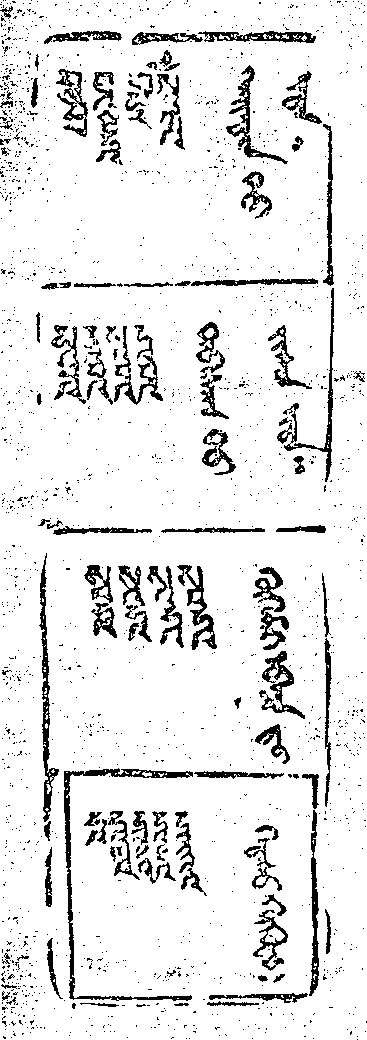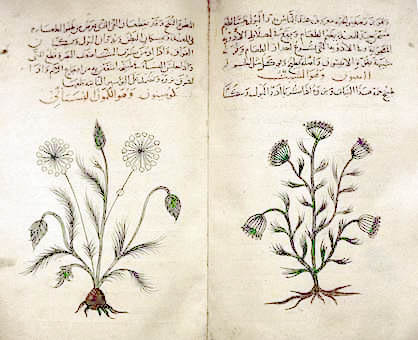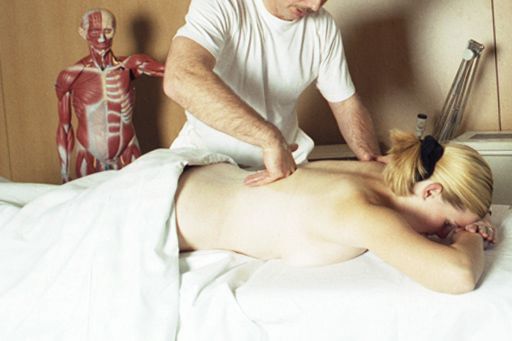|
Traditional Mongolian Medicine
Traditional Mongolian medicine developed over many years among the Mongolian people. Mongolian medical practice spread across their empire and became an ingrained part of many other people's medical systems. History The Mongols were part of a wider network of Eurasian people who had developed a medical system of their own, including the Chinese, Korean, Tibetan, Indian, Uighur, Islamic, and Nestorian Christians. They took the medical knowledge of these people, adapted it to develop their own medical system and at the same time organized an exchange of knowledge between the different people in their empire. On their journeys throughout Asia, the Mongols brought with them a team of doctors. Usually foreign, these doctors themselves had brought medical knowledge from other people in Asia to the Mongol court. They serve three purposes on the journeys on which the accompanied Mongol princes. Their first purpose was to be the personal physicians of the princes in case they required ... [...More Info...] [...Related Items...] OR: [Wikipedia] [Google] [Baidu] |
Mongolian People
Mongols are an East Asian ethnic group native to Mongolia, China (Inner Mongolia and other 11 autonomous territories), as well as the republics of Buryatia and Kalmykia in Russia. The Mongols are the principal member of the large family of Mongolic peoples. The Oirats and the Buryats are classified either as distinct ethno-linguistic groups or as subgroups of Mongols. The Mongols are bound together by a common heritage and ethnic identity, descending from the Proto-Mongols. Their indigenous dialects are collectively known as the Mongolian language. The contiguous geographical area in which the Mongols primarily live is referred to as the Mongol heartland, especially in discussions of the Mongols' history under the Mongol Empire. Definition Broadly defined, the term includes the Mongols proper (also known as the Khalkha Mongols), Buryats, Oirats, the Kalmyks and the Southern Mongols. The latter comprises the Abaga Mongols, Abaganar, Aohans, Arkhorchin, Asud, Baarins ... [...More Info...] [...Related Items...] OR: [Wikipedia] [Google] [Baidu] |
Wei Yilin
Wei Yilin (; –1347) was a Chinese physician and surgeon who lived during the Mongol-led Yuan dynasty of China. He compiled the medical treatise ''Shiyi Dexiaofang'' and invented a suspension method for reducing dislocated joints and fractures. History Wei Yilin was born in a family of physicians. His great grandfather was a prominent physician, and his father, uncle, grandfather, and great-uncle were all trained in medicine. Wei became a scholar and joined the Imperial Academy of Medicine. He worked as an instructor for a medical school in Nanfeng, Jiangxi. Wei is best known as an orthopedic physician for compiling the medical treatise ''Shiyi Dexiaofang'' (), or Efficacious Remedies of the Physicians. The book describes treatments for joint dislocations and bone fractures. Wei used anesthetics for his surgical procedures. He pioneered a new technique for reducing dislocated joints using a suspension method. The historian George Lane compares it to a similar technique adopted b ... [...More Info...] [...Related Items...] OR: [Wikipedia] [Google] [Baidu] |
Traditional Tibetan Medicine
Traditional Tibetan medicine or Sowa Rigpa is the Tibetan medical system developed in the 8th century under King Trisong Detsen that incorporated the best international medical practices of that time.Claude Arpi, ''Glimpses on the Tibet History'', "Sowa Rigpa" (Art of Healing). Dharamsala: The Tibet Museum, 2016, Chapter 9 The medical treatise ''Giyud Shi'', or the ''Four Tantras'', was then originally composed and later edited in the 12th century. Tibetan medicine employs multiple approaches to diagnosis that incorporate techniques including Venesection, Moxibustion, Compression Therapy, Medicinal Bathing, and massage. The pharmacology relies on complex formulas of multi-ingredient medicines that use herbs, minerals, metals, and animal products. The Tibetan medical system's Four Tantras was based on Tibet's indigenous health practices, and this knowledge joined that of the 8th century invited conference attendants arriving from Greece, Persia, India, China, and Central Asia th ... [...More Info...] [...Related Items...] OR: [Wikipedia] [Google] [Baidu] |
Traditional Chinese Medicine
Traditional Chinese medicine (TCM) is an alternative medicine, alternative medical practice drawn from traditional medicine in China. A large share of its claims are pseudoscientific, with the majority of treatments having no robust evidence of effectiveness or logical mechanism of action. Some TCM ingredients Traditional Chinese medicine#Safety, are known to be toxic and cause disease, including cancer. Medicine in traditional China encompassed a range of sometimes competing health and healing practices, folk beliefs, Scholar-official, literati theory and Confucianism, Confucian philosophy, Chinese herbology, herbal remedies, Chinese food therapy, food, diet, exercise, medical specializations, and schools of thought. TCM as it exists today has been described as a largely 20th century invention. In the early twentieth century, Chinese cultural and political modernizers worked to eliminate traditional practices as backward and unscientific. Traditional practitioners then selec ... [...More Info...] [...Related Items...] OR: [Wikipedia] [Google] [Baidu] |
Pharmacognosy
Pharmacognosy is the interdisciplinary scientific study of natural drugs and bioactive compounds from plants, animals, and minerals—originally focused on identifying crude drugs but now expanded to molecular, chemical, ecological, and medicinal aspects of natural products. Plants produce a variety of chemical compounds—primary metabolites essential for all plants and secondary metabolites with specialized roles like defense and pollination attraction—that include classes such as alkaloids, polyphenols, glycosides, and terpenes, many of which have therapeutic uses in humans and are isolated through bioassay-guided fractionation. Traditional medicine continue to inform modern pharmacology. Microscopic evaluation plays a key role in identifying herbs, detecting adulterants, and examining distinctive plant tissues through methods such as measuring leaf constants, including the stomatal index, which expresses the proportion of stomata to epidermal cells. Description The ... [...More Info...] [...Related Items...] OR: [Wikipedia] [Google] [Baidu] |
List Of Branches Of Alternative Medicine
This is a list of articles covering alternative medicine topics. A * Activated charcoal cleanse * Acupressure * Acupuncture * Affirmative prayer * Alexander technique * Alternative cancer treatments * Animal-assisted therapy * Anthroposophical medicine * Apitherapy * Applied kinesiology * Aquatherapy * Aromatherapy * Art therapy * Asahi Health * Astrology * Attachment therapy * Auriculotherapy * Autogenic training * Autosuggestion * Ayurveda B * Bach flower therapy * Balneotherapy * Bates method * Bibliotherapy * Biodanza * Bioresonance therapy * Blood irradiation therapies * Body-based manipulative therapies * Body work (alternative medicine) or Massage therapy C * Chelation therapy * Chinese food therapy * Chinese herbology * Chinese martial arts * Chinese medicine * Chinese pulse diagnosis * Chakra * Chiropractic * Chromotherapy (color therapy, colorpuncture) * Cinema therapy * Coding (therapy) * Coin rubbing * Colloidal silver therapy * Co ... [...More Info...] [...Related Items...] OR: [Wikipedia] [Google] [Baidu] |
Mongolia
Mongolia is a landlocked country in East Asia, bordered by Russia to the north and China to the south and southeast. It covers an area of , with a population of 3.5 million, making it the world's List of countries and dependencies by population density, most sparsely populated sovereign state. Mongolia is the world's largest landlocked country that does not border an Endorheic basin, inland sea, and much of its area is covered by grassy steppe, with mountains to the north and west and the Gobi Desert to the south. Ulaanbaatar, the capital and List of cities in Mongolia, largest city, is home to roughly half of the country's population. The territory of modern-day Mongolia has been ruled by various nomadic empires, including the Xiongnu, the Xianbei, the Rouran, the First Turkic Khaganate, the Second Turkic Khaganate, the Uyghur Khaganate and others. In 1206, Genghis Khan founded the Mongol Empire, which became the largest List of largest empires, contiguous land empire i ... [...More Info...] [...Related Items...] OR: [Wikipedia] [Google] [Baidu] |
Western Asia
West Asia (also called Western Asia or Southwest Asia) is the westernmost region of Asia. As defined by most academics, UN bodies and other institutions, the subregion consists of Anatolia, the Arabian Peninsula, Iran, Mesopotamia, the Armenian highlands, the Levant, the island of Cyprus, the Sinai Peninsula and the South Caucasus. The region is separated from Africa by the Isthmus of Suez in Egypt, and separated from Europe by the waterways of the Turkish Straits and the watershed of the Greater Caucasus. Central Asia lies to its northeast, while South Asia lies to its east. Twelve seas surround the region (clockwise): the Aegean Sea, the Sea of Marmara, the Black Sea, the Caspian Sea, the Persian Gulf, the Gulf of Oman, the Arabian Sea, the Gulf of Aden, the Red Sea, the Gulf of Aqaba, the Gulf of Suez, and the Mediterranean Sea. West Asia contains the majority of the similarly defined Middle East. The ''Middle East'' is a political term invented by Western geographers that has ... [...More Info...] [...Related Items...] OR: [Wikipedia] [Google] [Baidu] |
Pulse Diagnosis
Pulse diagnosis is a diagnostic technique used in Ayurveda, traditional Chinese medicine, traditional Mongolian medicine, Siddha medicine, traditional Tibetan medicine, and Unani. Pulse diagnosis is ill-defined and subjective. Traditional Indian medicine (Ayurveda and Siddha-Veda) In Ayurveda, advocates claim that by taking a pulse examination, imbalances in the three Doshas ( Vata, Pitta, and Kapha) can be diagnosed. The ayurvedic pulse also claims to determine the balance of prana, tejas, and ojas.Peter Koch, December 1, 2012Ayurvedische Pulsdiagnose/ref> Ayurvedic pulse measurement is done by placing index, middle and ring finger on the wrist. The index finger is placed below the wrist bone on the thumb side of the hand (radial styloid). This index finger represents the Vata dosha. The middle finger and ring finger are placed next to the index finger and represents consequently the Pitta and Kapha doshas of the patient. Pulse can be measured in the superficial, ... [...More Info...] [...Related Items...] OR: [Wikipedia] [Google] [Baidu] |
Physiotherapy
Physical therapy (PT), also known as physiotherapy, is a healthcare profession, as well as the care provided by physical therapists who promote, maintain, or restore health through patient education, physical intervention, disease prevention, and health promotion. Physical therapist is the term used for such professionals in the United States, and physiotherapist is the term used in many other countries. The career has many specialties including musculoskeletal, orthopedics, cardiopulmonary, neurology, endocrinology, sports medicine, geriatrics, pediatrics, women's health, wound care and electromyography. PTs practice in many settings, both public and private. In addition to clinical practice, other aspects of physical therapy practice include research, education, consultation, and health administration. Physical therapy is provided as a primary care treatment or alongside, or in conjunction with, other medical services. In some jurisdictions, such as the United Ki ... [...More Info...] [...Related Items...] OR: [Wikipedia] [Google] [Baidu] |
Hu Sihui
Hu Sihui (, 和斯輝, 忽斯慧, also Hu Zheng Qi Huei; active nr. 1314–1330) was a Chinese court therapist and dietitian during Yuan dynasty. He is known for his book '' Yinshan zhengyao'' (''Dietary Principles''), that became a classic in Chinese medicine and Chinese cuisine. He was the first to empirically discover and clearly describe deficiency diseases. Biography The career of Hu Sihui, as he states in preface to his book, was in the reign of Buyantu Khan in Yenyu years (1314—1320). His ethnicity is unclear. He has been credited as of Mongol descent by some East Asian scholars, while Western scholars have pointed out his Turkic descent, his book being "far too comfortable with Turkic and a larger Islamic culture." He was an official in Xuanhui Yuan (the Ministry of Court Supplies and Provisions), around 1315 Hu Sihui initially emerged as the therapist of Empress Dowager, soon also became the therapist of the acting Empress, and later received the rank of the chief ... [...More Info...] [...Related Items...] OR: [Wikipedia] [Google] [Baidu] |







